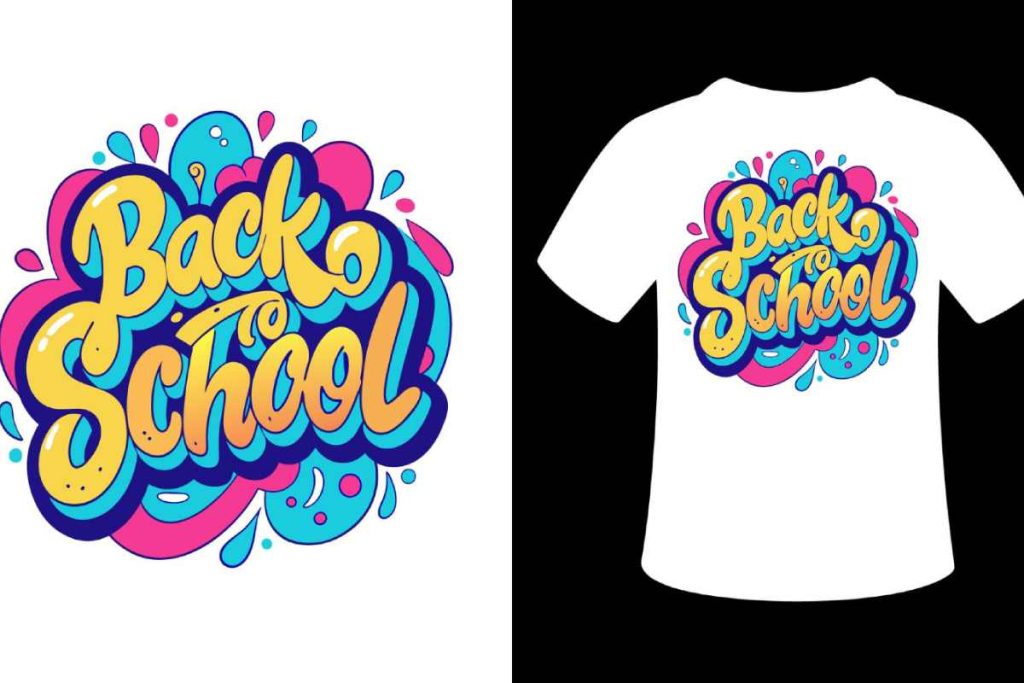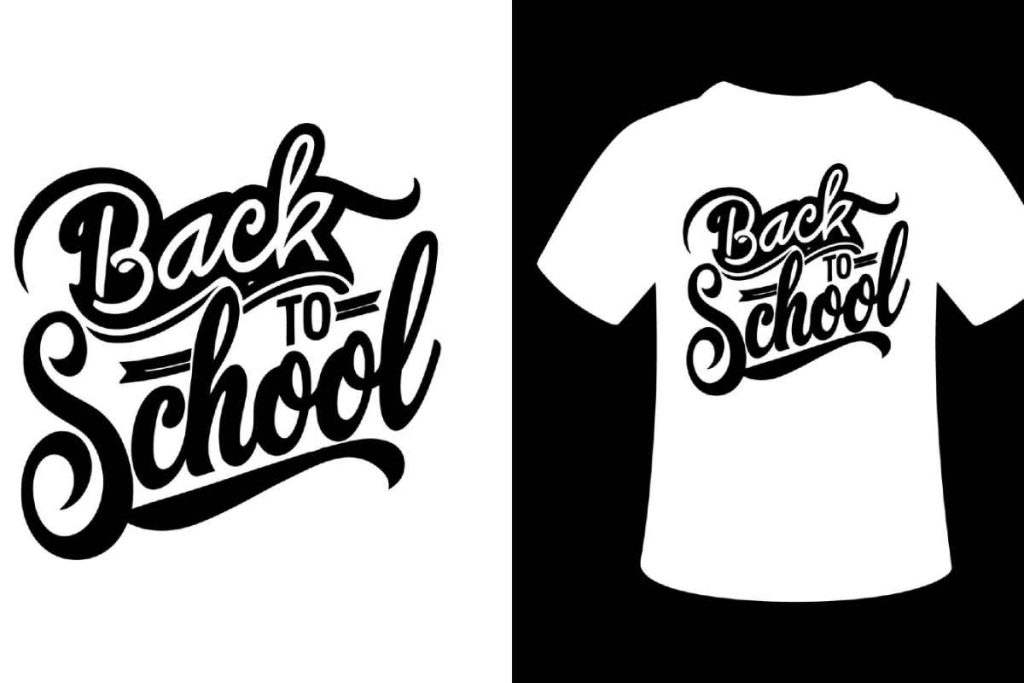DTF Transfers are revolutionizing the garment printing landscape, offering vibrant colors and high-quality prints that cater to the evolving needs of custom apparel. This innovative print technology utilizes Direct to Film (DTF) techniques to produce stunning designs on a wide variety of fabrics, making it a top choice for entrepreneurs and businesses alike. With the flexibility to handle both small and large orders, DTF transfers allow brands to meet consumer demand for personalized garments efficiently. As the shift toward sustainable printing practices continues, businesses are increasingly adopting DTF printing due to its eco-friendly approach, employing water-based inks that minimize environmental impact. In this guide, we will delve deeper into the world of DTF transfers, exploring their benefits, technology, and future potential in the market.
Also known as Direct to Film printing, this modern approach to textile decoration has gained traction among businesses eager to capitalize on the custom garment trend. By utilizing advanced print technology, DTF printing enables the creation of high-quality, durable designs that can be transferred onto a diverse range of materials, from cotton to synthetic blends. In a market driven by consumer preference for unique and personalized items, this cost-effective printing method not only meets but exceeds expectations for performance and sustainability. As businesses lean into on-demand production, the versatility of DTF transfers makes them an essential tool in the quest for quality prints while promoting environmentally responsible practices. In essence, Direct to Film technology is shaping the future of apparel printing, empowering brands to deliver stunning visuals with minimal waste.
Understanding DTF Transfers: A Game-Changer in Apparel Printing
DTF transfers, or Direct to Film transfers, represent a transformative method in the garment printing sector. This innovative technology allows users to print high-resolution designs onto a special film, which can then be heated and pressed onto fabric. One of the most significant advantages of DTF printing is its ability to create stunning, vibrant colors that last longer than many traditional printing techniques. The versatile nature of DTF transfers means they can be applied to a wide variety of materials, including cotton, polyester, and blends, thereby catering to diverse fabric needs.
Industry professionals appreciate DTF transfers for their efficiency and ease of use. Unlike traditional methods that may require lengthy setup times and complex processes, DTF printing simplifies garment customization. This streamlining is especially beneficial for businesses handling custom orders, as it allows for quick turnarounds without compromising on print quality. As the demand for personalized apparel continues to rise, DTF printing positions itself as a leading solution for businesses aiming to keep pace with consumer trends.
The Technology Behind DTF Printing: Innovation in Action
The technology driving DTF printing encompasses several advanced processes that enhance the quality and application of prints. At its core, DTF printing utilizes specially formulated inks and films designed to capture intricate details and vivid colors. This method features water-based inks that not only produce high-quality prints but also align with the increasing consumer demand for sustainable printing solutions. The eco-friendly nature of DTF inks positions businesses to appeal to environmentally conscious consumers, a trend that shows no signs of slowing down.
Moreover, advancements in adhesive technologies have significantly improved the durability of DTF prints. Innovative adhesives ensure that prints withstand numerous washes without fading or peeling, providing a long-lasting finish. Industries looking to combine creativity with functionality benefit from this technology, as it allows for detailed and colorful designs while maintaining the integrity of the garment over time. As the market continues to evolve, keeping up with these technological advancements is crucial for any business aiming to remain competitive in custom garment production.
Market Growth: The Rising Popularity of DTF Transfers
Recent market trends indicate a significant surge in the adoption of DTF printing across various sectors. The boom in e-commerce has paved the way for businesses to explore personalized garment solutions that can meet consumer demands swiftly. This rapid growth is underscored by the ease with which DTF technology allows for on-demand printing, enabling businesses to offer unique, customized items without the burden of excess inventory. As a result, DTF transfers have become a go-to option for brands looking to capitalize on the personalized apparel trend.
Additionally, the versatility of DTF transfers makes them appealing for a wide range of applications beyond simple garment decoration. From promotional products to unique fashion statements, the DTF printing method can fulfill various business needs. As market demand continues to shift towards individualized products, companies utilizing DTF technology will likely find a competitive edge, establishing a strong presence in the ever-growing world of custom printing.
Costs, Accessibility, and the Promise of DTF Printing
While the initial investment in DTF printing equipment can be a consideration, the overall cost per print remains remarkably competitive, particularly for small to medium-sized orders. This affordability allows startups and small businesses to access high-quality printing solutions without prohibitive expenses. Since DTF printing does not require large stock quantities, businesses can operate efficiently, reducing the risk of waste and maximizing resource allocation.
The accessibility of DTF printing technology is another appealing aspect, as a wide variety of printers are available to suit different operational scales and budgets. Furthermore, as more businesses start to adopt DTF printing, the price of materials and equipment is likely to decrease through increased competition. Consequently, the market can expect even greater accessibility to high-quality prints, solidifying DTF transfers as a favored choice in the realm of sustainable printing and custom garments.
Maximizing Success in DTF Printing: Practical Strategies
Success in DTF printing hinges on understanding and optimizing various components of the printing process. One key strategy involves experimenting with different film types and ink brands to find the optimal combination for specific fabrics. By understanding fabric characteristics and conducting tests, businesses can achieve optimal print quality that meets or exceeds customer expectations. This attention to detail can significantly enhance the final product, ensuring satisfied customers and repeat business.
Regular quality control processes form another essential element for businesses engaging in DTF printing. By calibrating printers frequently and monitoring the printing process, operators can maintain high standards in the output. Implementing a robust quality assurance strategy ensures consistency across prints, stemming from diligent oversight and a commitment to excellence. As businesses adapt to technological changes and consumer trends, keeping quality as a priority will distinguish them in the competitive market of DTF printing.
The Future of DTF Printing: Trends and Innovations
The future of DTF printing is poised for continued innovation and growth, driven by emerging trends in design and production. As technology progresses, it’s expected that we will see improved systems for automated printing, making it easier for businesses to scale their operations while keeping quality and efficiency in check. The expectation for faster turnaround times will further elevate the status of DTF transfers in the garment printing industry, allowing businesses to meet fast-paced consumer demands.
Additionally, sustainability will remain at the forefront of developments in DTF printing. As demand grows for eco-friendly practices, manufacturers will likely focus on creating more sustainable materials, inks, and processes. The integration of biodegradable films or inks made from natural resources could become commonplace, addressing consumer concerns about environmental impacts and product lifecycle. DTF printing is remarkably positioned to lead the charge in environmentally responsible garment decoration practices.
How to Choose the Right DTF Printer for Your Business
Choosing the right DTF printer is critical for businesses aiming to produce high-quality prints consistently. When selecting a printer, it is essential to consider factors such as print resolution, speed, and the types of fabrics it can accommodate. Other important considerations include the availability of compatible inks and films, as well as the overall ease of use of the equipment. Many modern DTF printers provide user-friendly interfaces that simplify the setup and printing processes.
Additionally, businesses should evaluate the support and warranty options available with their printer purchase. Reliable customer support can be a key differentiator, particularly for those new to DTF printing technology. Ultimately, investing in a quality DTF printer will result in superior product offerings, reflecting positively on the brand’s image and customer satisfaction. Proper research and assessments can ensure that the equipment chosen will serve the printing needs effectively.
Frequently Asked Questions
What makes DTF printing a popular choice for custom garments?
DTF printing is favored for custom garments due to its versatility and ability to create high-quality prints on various fabric types, including cotton and polyester. This method produces vibrant colors and durable finishes, making it ideal for personalized apparel that demands both quality and quick turnaround.
How do DTF transfers compare to traditional print technology?
DTF transfers offer significant advantages over traditional print technology by allowing for more detailed designs, vibrant colors, and versatility across different fabrics. Unlike methods that may struggle with dark textiles, DTF printing excels in producing clear, bright images, catering to today’s custom garment needs.
Are DTF transfers environmentally friendly?
Yes, DTF transfers utilize eco-friendly inks and modern printing technology, aligning with sustainable printing practices. The water-based inks employed in DTF printing help reduce harmful environmental impact, appealing to eco-conscious consumers and brands.
Can DTF printing handle large volume orders?
Absolutely! While DTF printing is excellent for smaller runs thanks to its quick setup, advancements in automated printing technology have increased efficiency, enabling businesses to handle large volume orders without sacrificing the high-quality prints that DTF is known for.
What types of fabrics can benefit from DTF transfers?
DTF transfers can be applied to a wide range of fabrics, including cotton, polyester, and blends. This versatility makes DTF printing suitable for an array of products, from custom tees to athletic apparel, ensuring vibrant and durable results on various materials.
What should businesses know about the costs of DTF printing?
While the initial investment in DTF printers may be higher, the cost per print remains competitive, particularly for small orders. DTF printing allows businesses to produce high-quality custom garments on demand, minimizing waste and optimizing cost efficiency.
| Key Point | Details |
|---|---|
| What is DTF Printing? | A modern printing method using water-based inks on film, known for its versatility, vibrant colors, and easy setup. |
| Recent Advancements and Technologies | Innovations include eco-friendly inks, improved adhesives for durability, and automated printing tech to enhance efficiency. |
| Market Growth and Demand | Increasing adoption driven by e-commerce and demand for on-demand, personalized garments being met by DTF. |
| Costs and Accessibility | Significant initial investment but competitive cost per print; suitable for both small businesses and large enterprises. |
| Practical Tips for DTF Printing | Test inks and films, maintain quality control, and stay updated on technology for optimal results. |
Summary
DTF transfers are transforming the garment printing industry by providing high-quality, vibrant, and durable prints with remarkable versatility. As the technology progresses, businesses can benefit from eco-friendly inks and improved production processes, making DTF an essential tool for those looking to deliver custom apparel. The surge in market demand driven by e-commerce and personalized consumer preferences further confirms that DTF printing is not only a trend; it is a modern solution that meets the needs of today’s fast-paced and environmentally conscious market.



